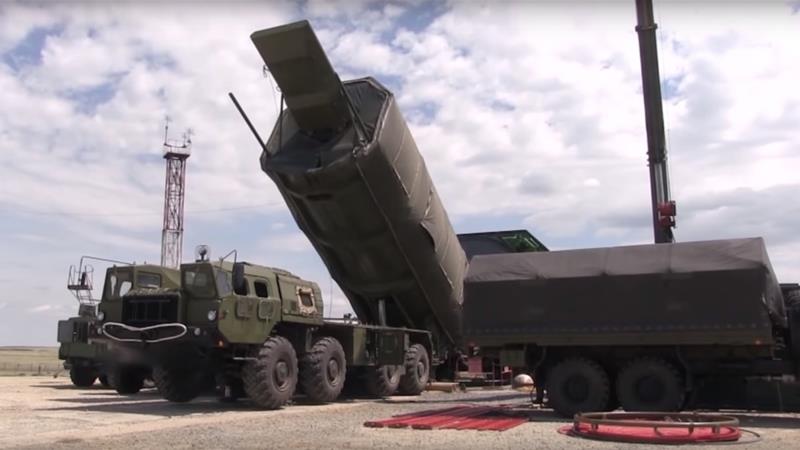Since a few weeks, we can observe an intensified news flow about the 3M22 Zircon (SS-N-33) hypersonic missile. Is Russia trying to show its real capabilities, or is it just a way to fool the West?
Zircon (Tsirkon in Russian language) is a high speed missile designed to attack ships and therefore its development is of a high interest especially to the United States which hard power relies heavily on aircraft carriers and other sea assets.
The missile is reportedly capable of flying with speeds up to Mach 9 and a range of 1000 km, but those claims are yet to be proven and independently verified. After the recent test conducted in July, some data may be available for western intelligence agencies, but it was not leaked into the public.
The test conducted from Admiral Gorshkov sailing through the White Sea was successful, and the missile hit a ground target located 350 km away on the coastline of the Barents Sea. Reportedly during this recent test the missile flew with Mach 7 speed. Zircon can reach very high speeds thanks to a dual motor arrangement, with a solid state rocket providing the initial boost, and a scramjet engine allowing it to reach its maximal speeds.
Zircon is one of Vladimir Putin’s puppet systems, as he claims there is no equal system like this in the world. The rapid development conducted by Russia is somehow worrying. There are no quick solutions for such systems to emerge in the West to balance the Russian capabilities, although one has to mention that here are ongoing efforts to close that gap. Interestingly, that after the X-51 Wave Rider the US experiments with hypersonic started more than 10 yeas ago have rapidly slowed down and there was not much pressure for further development. Russian work has pumped new life in rapid testing and new technologies. Although equipping own forces with similar systems is important, it is even more important to provide defence measures to counter such missiles.
In July 2021 TASS has informed that Zircone could be test launched from a Norther Fleet nuclear-powered submarine Severodvinsk (Project 885 (Yasen)) in August this year. Tass was pumping up the range of the missile in the very same news piece to up to 1500 km when engaging ground targets and only slightly less when attacking naval targets. In late August, the submarine test was pushed into September. According to Russian military sources, the trials will include several launches before the White Sea freezes.
On the 24th of August TASS has reported, that Research and Production Association of Machine-Building, the producer of Zircone missiles, has inked a deal with Russian Defence Ministry on the delivery of hypersonic missiles. The contract is supposed to be fulfilled by 2025 which might indicate that the first deliveries will start sooner as was previously highlighted by Russian authorities. The missile is expected to enter service in 2023.

There is much concern about new weapons emerging in Russia in recent years, with Avangard, Kinzhal, and Tsirkon being at the top of the scale. Zircone which will be a conventional weapon is not that dangerous as the other as they have nuclear warhead capabilities. It is widely discussed if hypersonic cruise missiles could have a devastating impact on US ships in a potential conflict. It is obvious that such a small conventional missile, even travelling with hypersonic speeds, won’t sink an aircraft carrier. The threat lies in making it inoperable for some time. If hit by several Zircone missiles, the problem could get bigger, but such an attack would have to overcome a layered missile defence system used by an aircraft carrier group. The sole existence of such threats as Zircone makes operating of US forces more difficult. We also have to take into account that Russia is not the main state actor that the United States has to deal with. All eyes are on China. What will happen if China will push its hypersonic missile’s development even further and have such missile’s on its artificial islands, ships, and in continental naval bases? This will add even more complexity to US operations in the region and possibly push the sea assets further away from the theatre to protect them. China already has plans to swarm US missile defences with hypersonic cruise missiles. Such weapons are hard to destroy when conducting low level approaches. It is also possible that some sort of cooperation between Russia and China might emerge in the hypersonic realm, and it will speed the development of even more capable systems in both countries.
United States and other western countries will have to develop effective countermeasures to defend their critical assets form emerging hypersonic weapons. This won’t be an easy task, as hypersonic cruise missiles travelling at very high speeds and at very low altitudes are difficult to neutralize.
Post Author
Author
-

Ph.D. in liberal arts in the field of military history, specializing in military aviation, analyst in the field of military aviation, defense, modern warfare geopolitics and security.
View all posts





